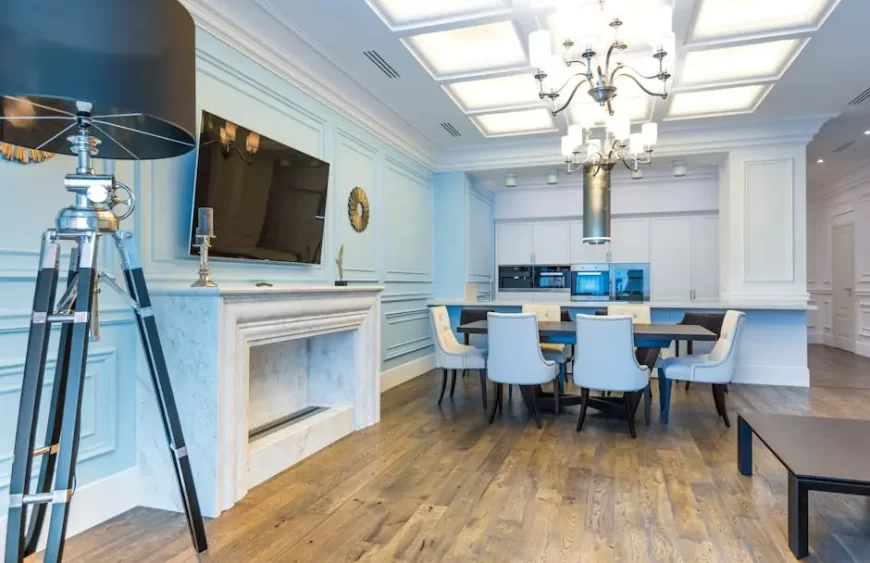7 Essential Fireplace Tips from Local Installers in San Antonio
December 17, 2024 2024-12-17 18:387 Essential Fireplace Tips from Local Installers in San Antonio

7 Essential Fireplace Tips from Local Installers in San Antonio
Having a cozy fireplace is a delight, especially during the cooler months. Whether you’re thinking of installing a new fireplace or maintaining an existing one, local fireplace installers in San Antonio have some invaluable tips to share. Let’s explore their best advice to ensure your fireplace remains a warm and inviting focal point in your home.
1. Choosing the Right Fireplace for Your Space
Not every fireplace will suit your home or lifestyle. Local installers recommend considering the size of your room, your heating needs, and your aesthetic preferences when choosing the perfect fireplace. Furthermore, the type of fuel you wish to use—be it wood, gas, or electric—imposes different requirements and experiences. For instance, wood-burning fireplaces exude traditional charm but demand more maintenance due to soot and ash management. Electric fireplaces, with their easy installation and modern features, offer convenience but may lack the authentic feel of flickering flames. Consulting with local fireplace installers can help clarify these points and lead you to a choice that aligns perfectly with your home’s dynamics and your lifestyle desires.
2. Understanding Ventilation Requirements
Proper ventilation is crucial for safety and efficiency. Experts emphasize the importance of understanding your specific fireplace’s ventilation needs, ensuring the exhaust is effectively managed to prevent indoor pollution. Poorly ventilated fireplaces can lead to a buildup of smoke and carbon monoxide, posing significant health risks. Local professionals often point out that chimney inspections are vital to assess blockages or damages that could impede airflow. The installation of a chimney cap is recommended to prevent debris and critters from obstructing the venting system. Learning about various venting options tailored to different fireplace types can also guide homeowners in maintaining a healthy indoor environment.
3. Regular Cleaning and Maintenance
Keeping your fireplace clean is essential for its longevity and efficiency. Local specialists suggest regular cleaning of the firebox and chimney to minimize creosote buildup and reduce the risk of fires. Creosote is a sticky byproduct of burning wood, capable of igniting if not regularly removed. It’s advised to sweep the chimney annually, or more often depending on usage. Additional maintenance actions include checking for structural integrity, like ensuring the damper is functional and free from rust. By scheduling routine inspections and cleanings with professionals, you can preemptively address potential issues, ensuring both performance and safety year-round.
4. Optimal Wood Selection
Choosing the right type of wood can make a big difference in how well your fireplace functions. San Antonio experts recommend using seasoned hardwoods for a longer, cleaner burn. Hardwoods such as oak, hickory, and maple are favored for their high energy content and low resin, which means they produce minimal creosote while burning hot and steadily. It’s essential to let these woods dry thoroughly—typically for at least six months—to reduce moisture content, ensuring a more efficient and vibrant flame. On the contrary, softwoods like pine tend to burn faster and can lead to more frequent creosote accumulation due to their resin content. For environmentally conscious homes, selecting local and sustainable wood sources can minimize transportation emissions and support eco-friendly practices.
5. Balancing Functionality with Design
Fireplaces are both functional and decorative. Aligning your design choices with practical considerations, such as the type of fireplace insert, can enhance both the aesthetics and utility of your space. Inserts can dramatically improve the efficiency of a traditional fireplace by reducing draft and smoke escape while increasing heat output. They come in various styles and finishes, letting homeowners choose one that harmonizes with their interior decor. Also worth considering are the materials used around the fireplace—non-combustible options like stone, brick, or slate provide both safety and a visually appealing finish. Thinking ahead about your fireplace’s use, whether as a primary heat source or a seasonal décor, can help guide your decisions around integrating it seamlessly into your living environment. Engaging with fireplace design experts can offer fresh perspectives and innovative solutions tailored to your specific needs.
6. Embracing Energy Efficiency
Energy efficiency doesn’t just reduce your carbon footprint; it also cuts costs. Local installers suggest looking into energy-efficient fireplace models and options to save on heating bills. Models equipped with blowers, for instance, can distribute heat more effectively throughout a room, reducing the need for alternative heating sources. Advances in technology have also introduced smart fireplaces that enable remote operation and precise temperature control. These features, along with the choice of a well-insulated insert, can optimize fuel use, whether gas or wood, making significant reductions in both energy usage and costs. Many energy-efficient fireplaces qualify for tax credits or utility rebates, offering financial incentives alongside ecological benefits. Consulting with specialists about high-efficiency fireplace solutions can help you navigate the options best suited to your household needs.
7. Ensuring Safety with Proper Installation
Safety is paramount when it comes to fireplaces. Trusting professional local installers in San Antonio to carry out your installation ensures that all safety protocols are met, giving you peace of mind as you enjoy the warmth. Professionals adhere to building regulations and code requirements, ensuring aspects like clearances, stability, and ventilation are impeccably handled. Missteps in installation can lead to issues such as improper venting, which might cause carbon monoxide buildup, or inadequate support, risking structural integrity. By engaging qualified experts, you protect your home from potential fires and health hazards, ensuring a risk-free environment for your family. Furthermore, these experts can advise on fireplace safety features like spark guards and carbon monoxide detectors, enhancing the safe use of your fireplace.





